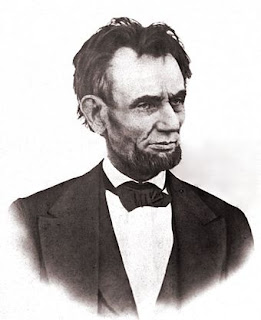President Abraham Lincoln was assassinated on April 14, 1865, just five days after Robert E. Lee had surrendered his Confederate Army at Appomattox. The assassination plot was formulated and led by famous actor and Southern sympathizer John Wilkes Booth. Booth's original plan had been to kidnap the president and take him to the Confederate Army, using him as a bargaining chip in soldier exchange negotiations. It was at Lincoln's second inauguration that Booth decided and felt confident that he could assassinate Lincoln. Booth often boasted that he could have shot Lincoln at his inauguration, but did not for whatever reason. To help him carry out his plot, Booth recruited Samuel Arnold, George Atzerodt, David Herold, Michael O'Laughlen, Lewis Powell, and John Surratt. They held their meeting in the tavern owned and operated by Surratt's mother Mary. Booth assigned Atzerodt to kill Vice President Andrew Johnson, and Powell to kill Secretary of State William Seward, and he would take care of Lincoln himself. Booth also said he would stab General Ulysses S. Grant, but Grant and his wife declined Lincoln's invitation. Booth knew that Lincoln was going to be attending Ford's Theater, and watching a comedy called "Our American Cousin." Booth was familiar with the lay out of the theater, as well as the script of the play. His goal was to shoot Lincoln during one of the funniest parts of the play, when he knew there would be much laughter. On the night of the assassination, Booth was able to get into the theater without any problems, due to his celebrity status. He was able to walk right up to the Presidential Box and shoot Lincoln at point blank range. Major Henry Rathbone and his fiancee Clara Harris were in the box with Lincoln and his wife. Rathbone could do nothing until after the shot was fired. When he tried to confront Booth, he was stabbed in the arm. Booth jumped from the box, onto the stage, breaking his leg. He stood up, looked at the audience, and yelled "Sic semper tyrannis," meaning "Thus always to tyrants." The audience thought that this was all part of the play. Booth exited the theater and jumped onto the horse that was waiting for him. While all this was happening, George Atzerodt had not left the Surratt tavern. He ended up getting cold feet and never made his attempt to assassinate Andrew Johnson. Lewis Powell meanwhile had gone to the home of William Seward, where he had managed to get inside. He made it all the way up to Seward's bedroom, where he stabbed him, got in a fight with his son, and then escaped. Seward's family feared that he was dead, but the stab wounds were minor. On the outskirts of Washington D.C., Booth met up with David Herold. They were able to escape the town, and head back into Confederate Virginia territory. On the way they stopped at the home of Dr. Samuel Mudd, who set Booth's leg. Mudd had no idea who Booth was, and went ahead and provided him medical care. After leaving Mudd's home, Booth and Herold, with the Union army hot on their tail, took refuge in a barn. The Union soldiers set fire to the barn and Herold came out. One of the Union soldiers took out his pistol and fired into the barn, hitting Booth in the neck. Booth came out, lived for three hours, and then died. Before he died, he looked at his hands and said "Useless, useless." One of the largest manhunts in U.S. history was over. Back at Ford' Theater, there was complete chaos. Lincoln was taken across the street to a boarding house, where he was tended to the best the doctors could. At 7:22 the next morning, Lincoln passed away. He became the first U.S. president to be assassinated. All of Booth's conspirators including Mary Surratt and Dr. Samuel Mudd were tried and convicted for their roles in the assassination plot. All the conspirators were hanged except Dr. Mudd, who was sentenced to life in prison. Mary Surratt became the first woman to be hanged in U.S. history. The Assassination of Abraham Lincoln is one of the most tragic events in U.S. history, but will go down in history as a prime example of "true crime."
President Abraham Lincoln. This was the final sitting picture of Lincoln.
John Wilkes Booth
Ford's Theater as it appeared in 1865
Wanted poster for Booth and two of his accomplices.
This picture of Lincoln's inauguration shows just how close he and Booth were.
Stay tuned for more blog posts about tales from Tennessee and beyond. Be sure to go check out the section of the blog devoted to Moore Historical Consulting. What better gift this Christmas, then that of heritage management.






No comments:
Post a Comment